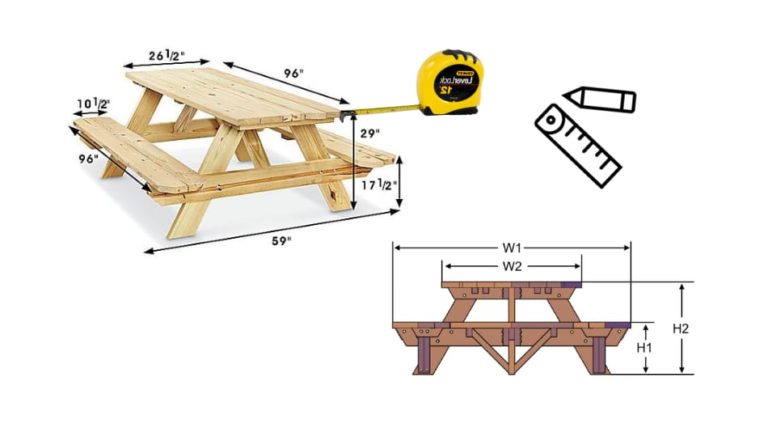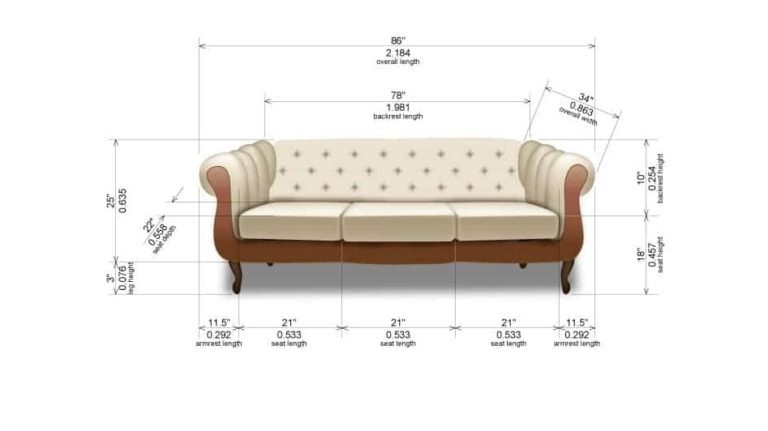What Is The Standard Window Height From The Floor?
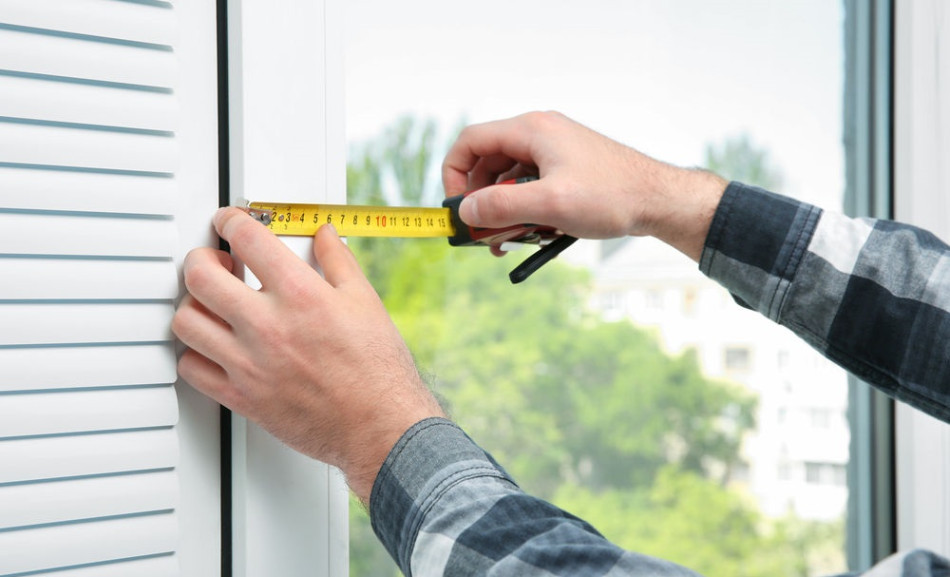
When adding a windows in your home, it is necessary to pay attention to the standard window height from the floor on which you will install them. Although, at first, it may seem that the windows can be placed as you wish, it’s not always the case. There are standard measures that every contractor must follow when installing windows, and they refer to the distance of the lower edge of the window from the floor and the upper edge to the ceiling. In this article, we’ll talk about that and much more. So, let’s start!
What’s The Standard Window Height From the Floor? Windows are usually installed 3 feet from the floor and 18 inches from the ceiling. These measures ensure that the window does not interfere with the placement of the furniture and heating objects in the room. This height also ensures that as much natural light as possible can enter the room.
However, there are no strict regulations about the precise window height, but there are some guidelines that you need to follow. There are some important guidelines such as standard window dimensions, why every window must have a header, and how to choose the one that suits you best.
Table of Contents
Basic Guidelines For Home Windows

As we’ve already mentioned, the standard window height from the floor is approximately 3 feet. Still, the regulations leave room for homeowners to determine the position of the windows in accordance with their personal preferences.
However, due to safety reasons, building codes require that windows cannot be higher more than 44 inches from the floor. Also, when it comes to windows on the second floor and up, for safety reasons, they cannot be installed at a level less than 24 inches from the floor.
When we talk about the distance between the window and the ceiling, it should also be noted that the standard 18 inches are not a prescribed obligation. But it should be noted that builders recommend compliance with this standard measure. If you are in the initial stage of planning windows installation, do not forget that with an average of 18 inches of free space between the window and the door, you should leave and add space for the window header.
What Is A Window Header?
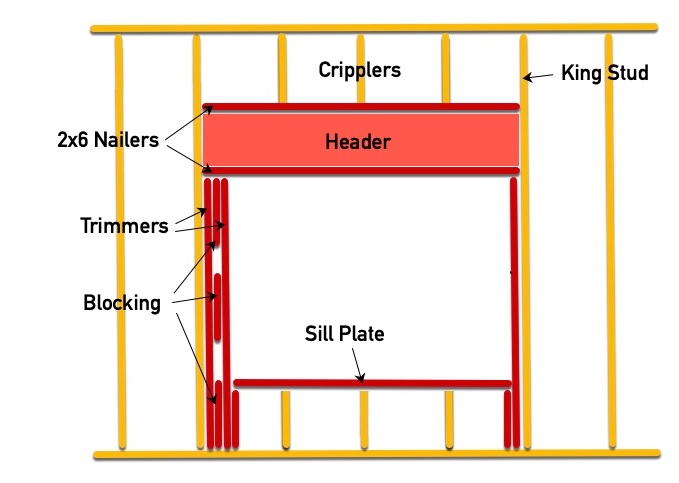
A Window header represents a kind of lever that stabilizes the upper floors of the home instead of the portion of the wall that you knocked out to install the window. If you are installing a window in the wall for the first time or if you plan to make the new window significantly different from the one you currently have, it is recommended to consult with a professional about the header.
You should know that if the appropriate header is not installed above the window, your house can collapse! Given that advice from an expert is not cheap, if you are only doing a classic window replacement, the safest option for the stability of your home is not to touch the header of the old window.
We have one interesting article that you might be interested in that is related to home windows: How To Open A Locked Window? 3 Types of Locks.
How High Is A Standard House Window?
Windows come in many different sizes and shapes, and there are no specific rules about a standard high of a house window. From elongated decorative windows next to the front door to small circular windows typical for attics. Although there are no unique measurements for windows, there are standard measurements that are used most often. Let’s look at a few examples together:
Bay Windows Height
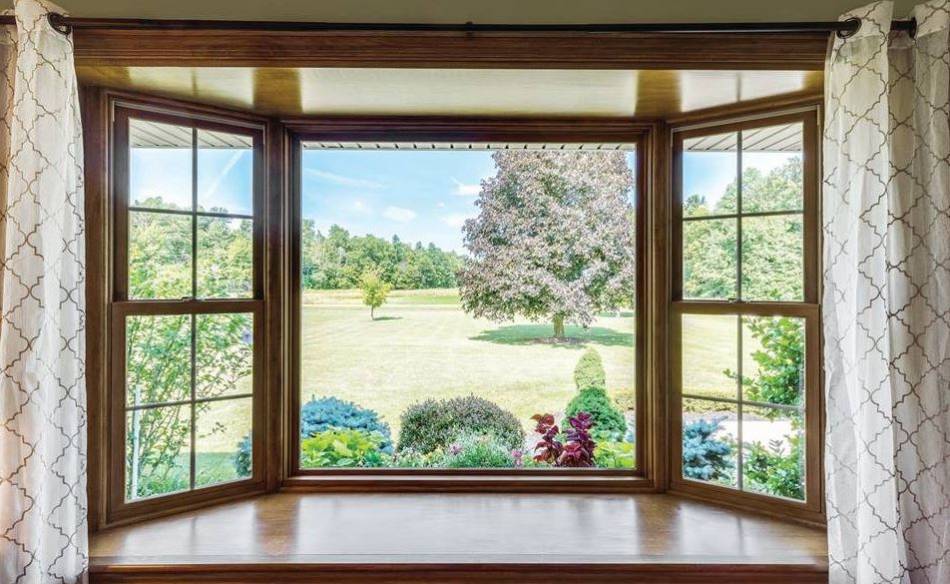
Bay windows can also be purchased in a wide range of dimensions. When we talk about the height, this window model extends from 3 to 6 feet, and it can be wide, ranging from 3.5 to 10.5 feet.
Sliding Windows Height
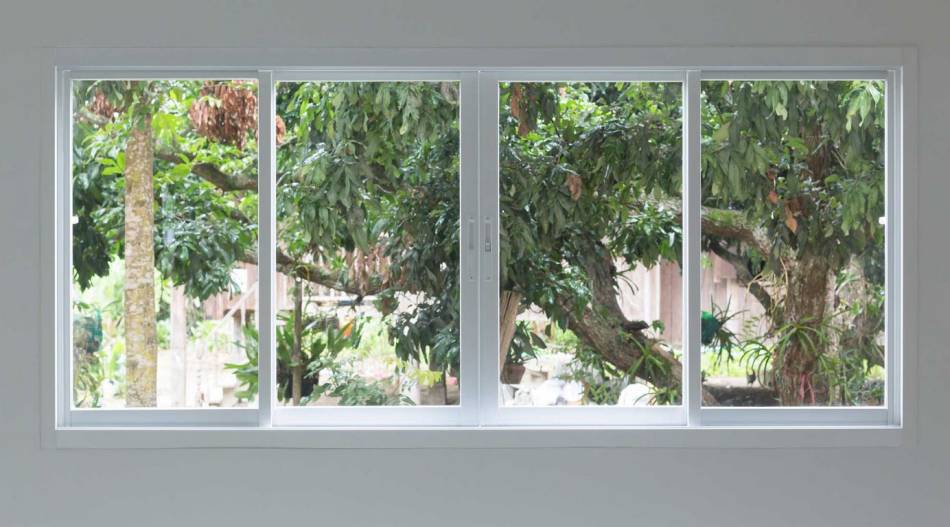
Due to the way these windows are opened, sliding windows are much wider compared to their length. Thus, the height of this window model ranges from 3 to 5 feet, and the width is between 3 to even 7 feet.
Double-Hung Windows Height
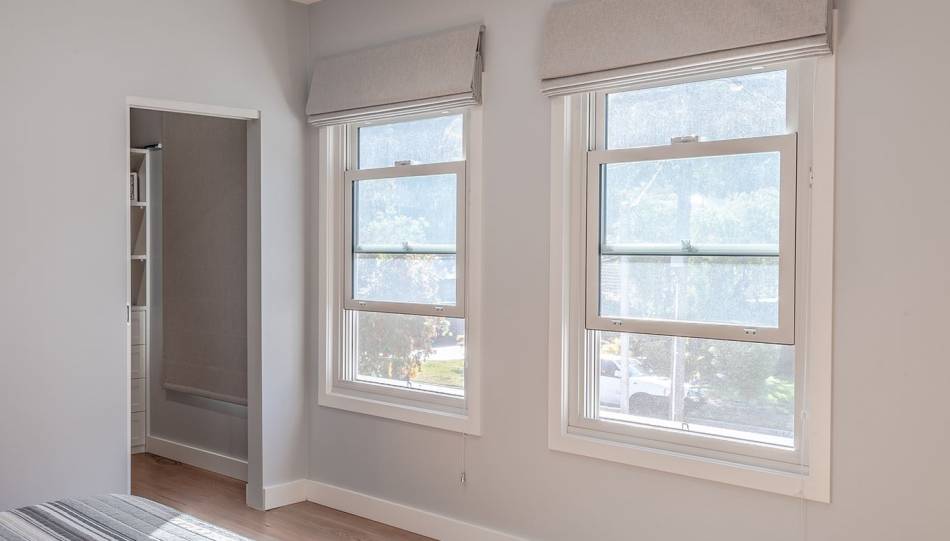
This window model is one of the most common that we see in households. Because of the popularity of this model, it is available in numerous dimensions. Usually, double-hung windows are installed at a height of 48 inches. In addition, most windows of this model are between 24 and 48 inches wide and between 36 and 72 inches high.
Awning Windows Height
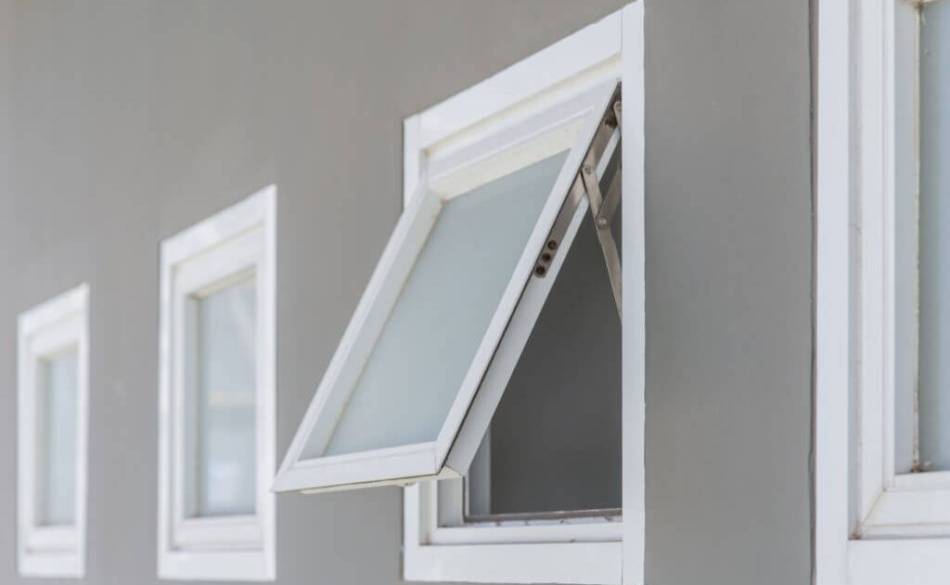
Awning windows are usually between 2 to 8 feet tall and are rarely wider than 4 feet. The basic design is similar to casement windows. These two models differ in their opening system. Unlike casement windows, awning windows open at the bottom of the frame with an upward push.
Casement Windows Height
Casement windows are a type of window that can be opened only on one side, while there is a hinge that is placed on the other. Their height ranges between 2.5 and 6 feet, and they are rarely wider than 3 feet.
Standard Height of Window From Floor Level
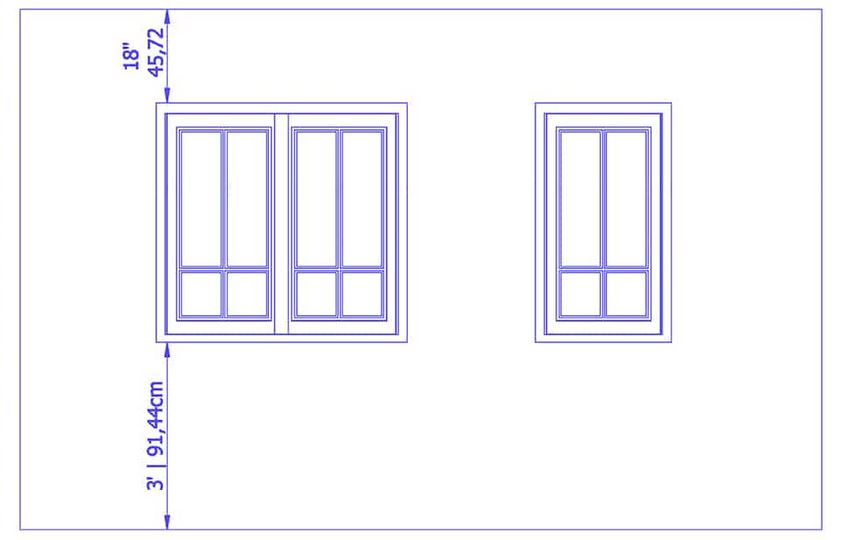
When installing new windows, you should know that there are two levels at different heights that you must pay attention to. Here is what you need to know:
- Sill Level – represents the standard distance from the lower edge of the window to the floor level and is usually around 3 feet (91,4 cm).
- Linter Level – represents the standard distance from the upper edge of the door frame to the floor level.
The function of the linter is to distribute the pressure of the load, which is why it is made of solid materials such as cement mortar and reinforced concrete. How to determine the lintel level? It is a simple task.
Let’s consider that the standard height of the door from the floor is 7 feet (2.1 m) and look at the equation together:
Windows height from floor level = Height of Door – Height of Window
Although the windows are very different from each other, we can conclude that the standard floor-to-ceiling window is 3 feet (90cm).
Safety Measures When Installing Windows
When installing a window, you must think about safety and follow all safety codes during the installation process.
One of those codes is that every basement room and bedroom must have an opening that can serve as an emergency exit in case of fire. The prescribed standard size of such an opening is 24×20 inches (an area of an average of 5 square meters). Note that such an opening must have easy and quick access.
Also, the national building code, which takes care of children’s safety, must be respected. In order to minimize child fall risk, if the floor on which the space is located is at a height greater than 6 feet, the windows cannot be lower than 24 inches from the bottom edge to the floor.
Are Window Walls Good?
Window walls are types of windows that stretch from the floor to the ceiling. These types of windows represent a modern innovation in the world of windows. Although window walls (also known as floor-to-ceiling windows) look fantastic, you should know that they are quite expensive. Their price per linear foot ranges from $800 to a dizzying $1900 per square foot.
It is clear that these types of windows are for those who have a huge budget. Glass surfaces can never be as well insulated as classic walls. This means that large windows will cause their owner an additional cost by increasing the heating/cooling bill. With all that said, we should not ignore the fact that window walls do not provide much privacy. Which definitely makes them an option that is not for everyone.
How Important Is Windows Placement?
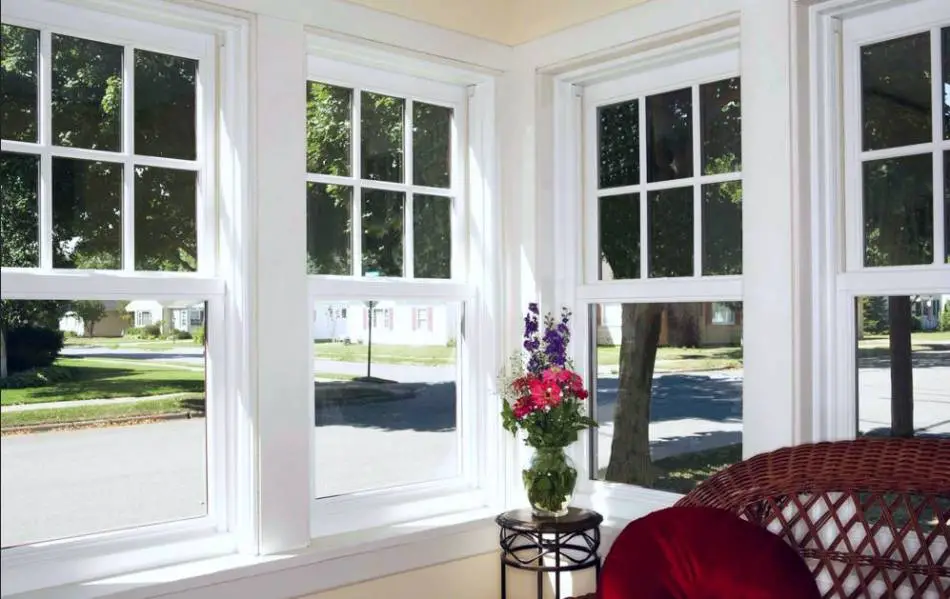
Windows greatly improve the quality of your house by letting natural light into the home and protecting us from negative external influences. That is why it is important how and where we place them.
- Ventilation – if the window is installed in a position from which it can let in the most natural air from the outside, better ventilation will be ensured throughout the home.
- Heating – regardless of the quality of the windows, they are still not walls. Through them, heat and cold pass more easily into your home. This is the main reason why large windows should be avoided.
- Exposure – the atmosphere in each room is largely determined by the position of the window towards the sun. If you like warmth in the evening and sunsets, you will be very satisfied with a window that faces the west, and if you long for the sun’s rays in the morning, it is a good choice to place the window on the east side.
Things to Consider When Installing Windows
Finally, here is a short summary of the parameters you should keep in mind when determining the dimensions of your new windows:
- Safety is important, and the window should provide it.
- The model of the window affects its function.
- A window constructor can give you valuable advice to consider.
- The project of installing a new window must start with reading the building codes.
- It is good that the window fits into the interior design of the room.
- The window should seamlessly become a part of your entire home.
For those who want to learn more about windows, be sure to read: Aluminum Foil On Windows: What Is the Purpose Of It?
FAQ: People Also Ask
What’s the Standard Head Height for Home Windows?
The standard head height of windows depends on the ceiling height in the room, and it is important to determine it well to ensure maximum ventilation and stability of the house structure. If the ceiling height is 10 feet, head height can be up to 8 feet. If the room’s height is standard 8 feet, then the head height is usually around 6 feet and 8 inches.
How big is a standard bedroom window?
In the bedroom, the windows are usually of a simple design and smaller in size to ensure privacy. The standard size is 24×36 inches. Almost every home has a window like this in at least one bedroom.
Is There a Law for How Low Windows Can Be?
The International Residential Code (IRC) in this regard was amended in 2018 with a provision that states: if the floor on which the window is installed is at a height of more than 6 feet, the windows cannot be lower than 24 inches from the bottom edge to the floor.
Are windows installed from the outside or inside?
The general rule is that new windows are installed on the side of the wall, which is the best option for the contractor. However, it is somewhat more demanding to install the window on the outside of the building because in that case, the exterior blind stop trim must be removed and then put back in place after the work is done. Which is not an easy task to do and is charged additionally.
Final Thoughts
Although it is the homeowner’s personal choice what kind of window he wants to install in his home, you should know that the standard window distance from the floor is 3 feet and 18 inches from the ceiling. Also, the position of your window can be additionally determined by building codes, which must be carefully studied at the very start point of the project. Considering everything we have highlighted in this article about window installation, you will surely know at what height you should place them.



